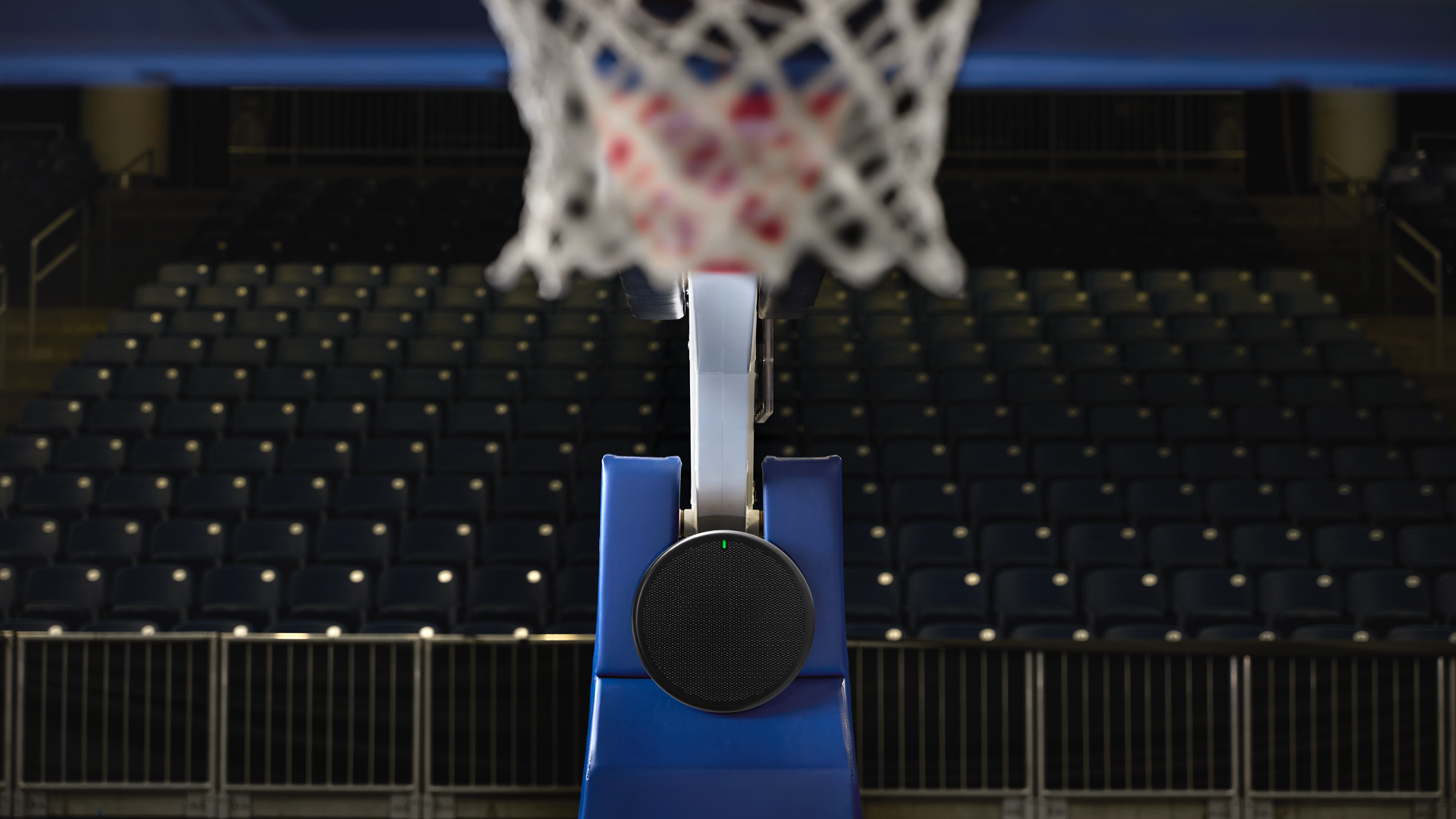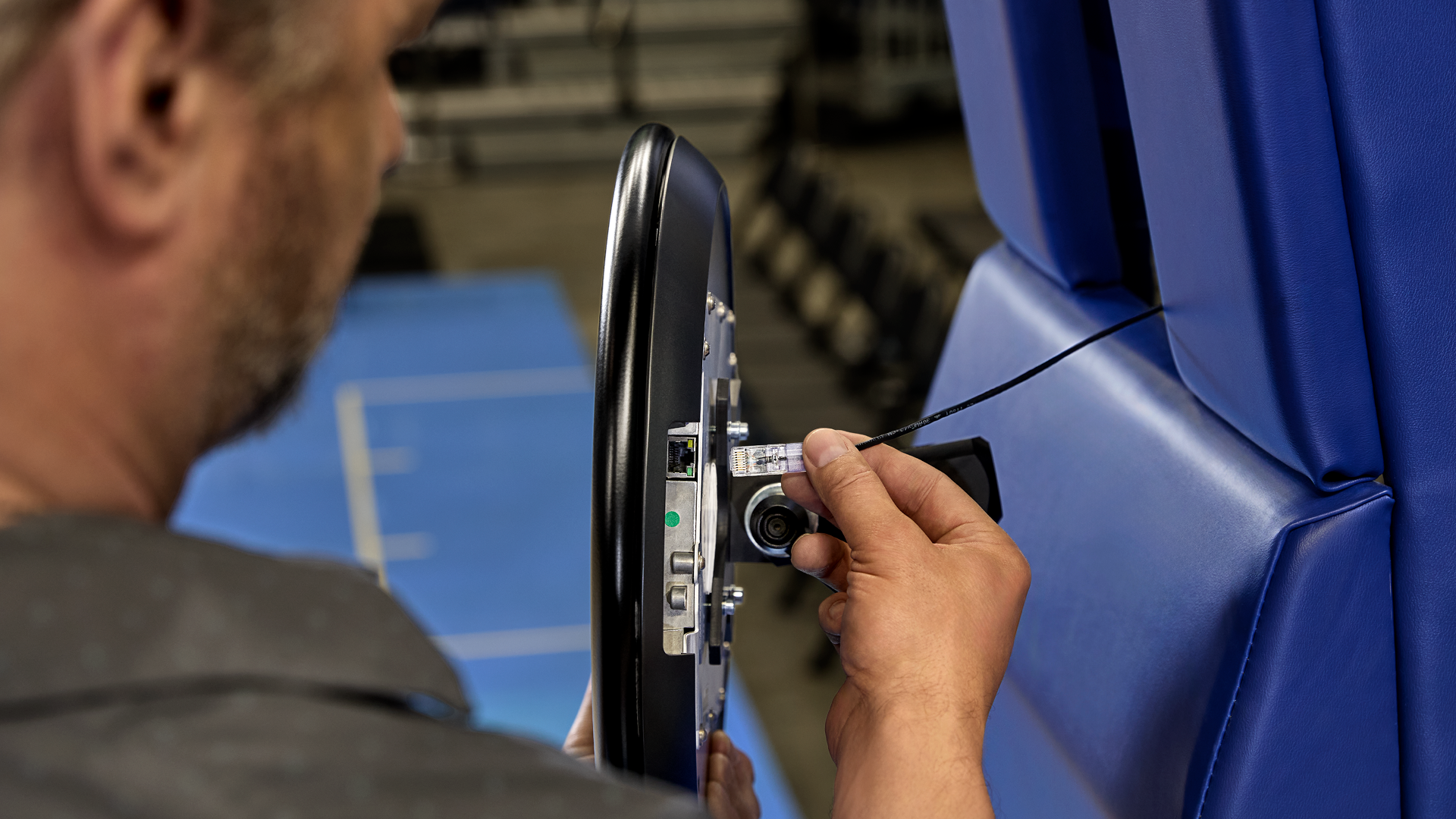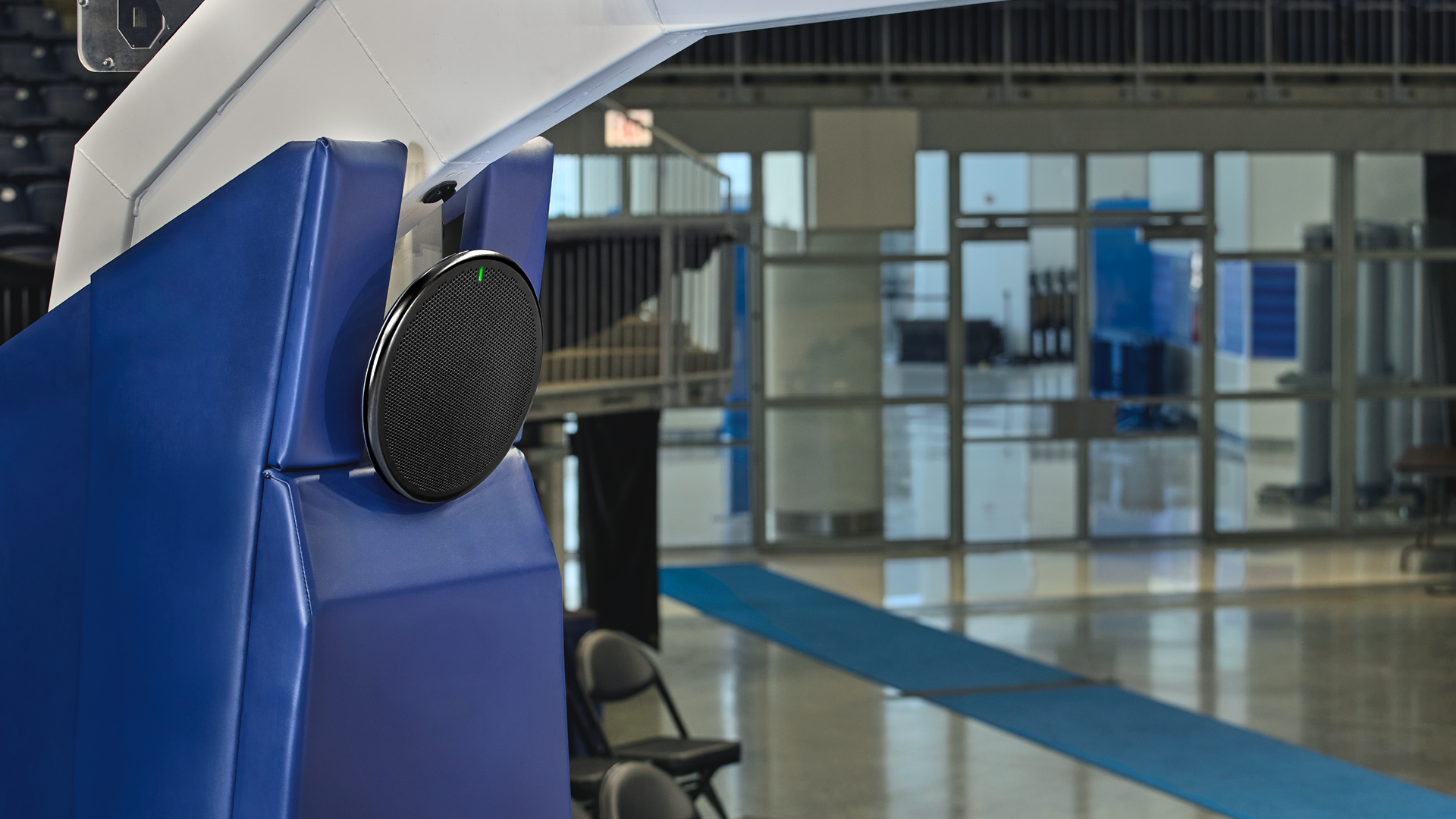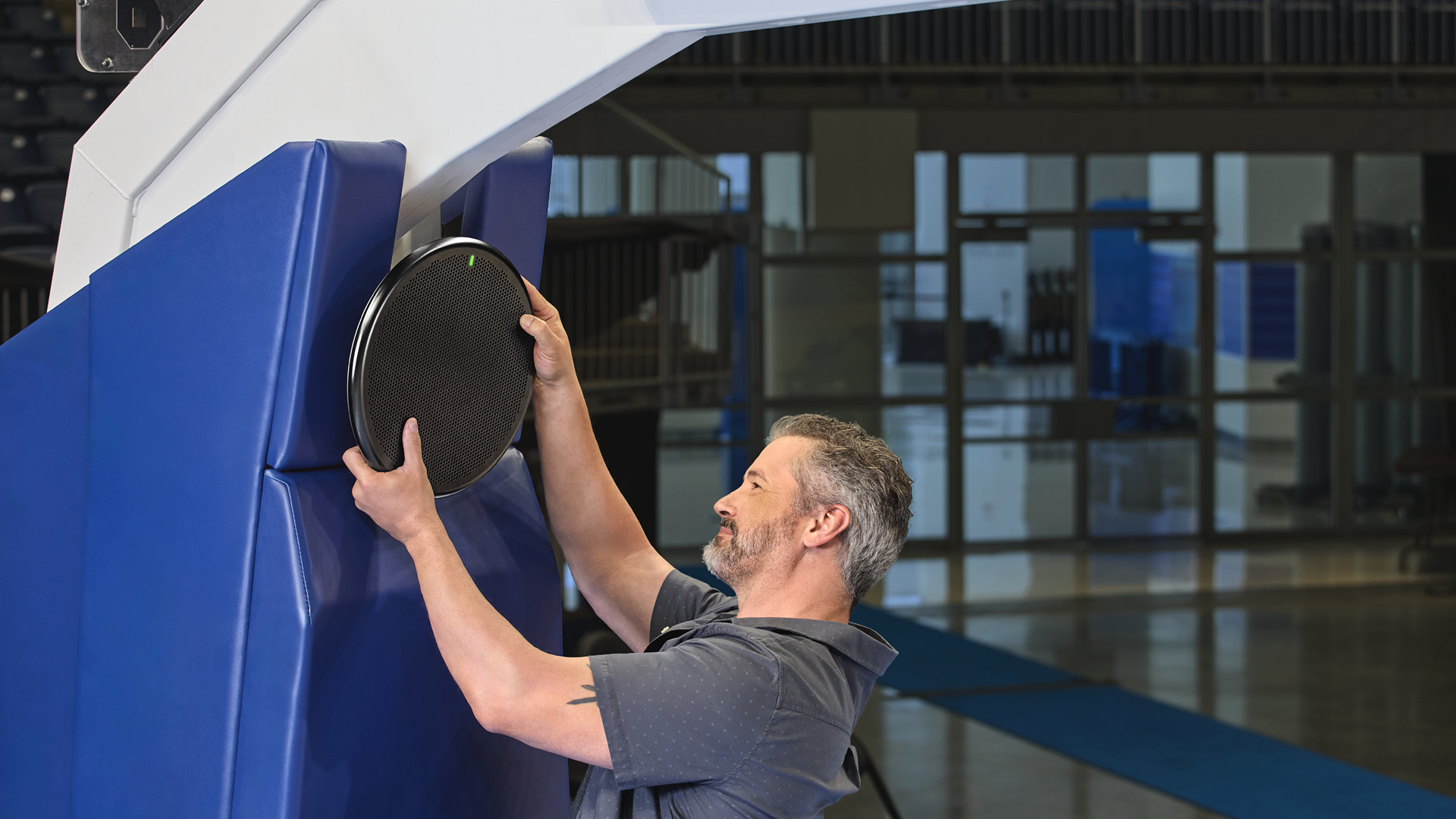Sponsored: Shure Ups the Game of REMI Audio with DCA901 Array
With eight individually steerable lobes and IP connectivity, the new array delivers the performance and convenience needed for REMI

Remote integration model (REMI) production is transforming how live television sports and entertainment events are being produced.
Increasingly, the producers of these events are opting to contribute video and audio from the field to a centralized production control room hundreds, if not thousands, of miles away to switch the show, mix audio, create graphics, titles, and replays and add all the other production sizzle once nearly exclusively done on site from mobile units.
Whether done from a brick-and-mortar production control room or a cloud instance of one with virtualized versions of those familiar production tools, REMI offers media organizations and other rights holders significant cost savings, greater staffing flexibility and more efficient production workflows.
When paired with live video streaming, REMI production has played a significant role in the growth of remote productions, as smaller audiences can be served affordably with live production of special-interest events and niche sports.
Given the reliance on remote video and audio contribution to make REMI production successful, it should go without saying that the greater the level of real-time remote monitoring and control of audio and video sources, the higher the level of production that can be delivered.
When it comes to audio, Shure unveiled a new mic’ing solution in September that not only can easily be monitored and controlled remotely but also delivers unmatched convenience and audio quality.
The new Shure DCA901 Digital Broadcast Microphone Array is an ideal REMI audio solution thanks to its eight individually steerable lobes that are fully controllable remotely via Ethernet LAN or WAN connectivity.
The professional video industry's #1 source for news, trends and product and tech information. Sign up below.
The Technology
The DCA901 uses an array of 78 elements that create the eight steerable lobes. Together, they create wider sound field coverage than traditional analog setups.
With a web browser interface, a user working remotely can manually steer each lobe during initial setup to cover where action is anticipated—whether that’s a basketball court or a government meeting—making the process fast and easy.
The array offers a single Dante or AES67 connection to deliver audio, power and control, further reducing setup complexity and eliminating possible points of failure. It also comes with presets, further simplifying setup.
At the heart of the DCA901 is a Digital Signal Processor (DSP) that provides eight audio channels, stereo and mono automix outputs and Pre-Fader Listen (PFL).
The automixers select the maximum number of lobes to use during a production based on acoustic energy. In addition to automixing, the DSP provides beamforming with precise directional control, noise reduction to minimize ambient sound for clear audio in loud environments and Parametric Equalizing (PEQ) finetuning for tonal clarity. The array also eliminates spatial aliasing and phase misalignment with synchronized processing.
Multiple DCA901 arrays can be used together, ranging from as few as two for basketball to 12 or more for soccer.
For certain sports, such as soccer, using DCA901 arrays with Edge Sound Research Virtual Sound Engine control software is highly desirable. The software relies on tracking data from systems like Hawkeye to control which DCA901 array lobes capture desired sound from the field—whether it’s the sound of a specific player kicking a penalty shot or multiple players battling for the ball.
REMI Setup and Workflow
The DCA901 streamlines remote production setup and workflows. The arrays can be used as a drop-in replacement for shotgun, parabolic and even wireless lavalier mics typically used for remote sports, meaning no special setup accommodation is necessary.

Offering independent, precise control over the steerable lobes, the mic’s web browser-based interface makes setup simple and fast. If game conditions should change, on-the-fly adjustments are just as fast and easy to make.
Rather than a long, tedious setup of multiple shotgun and parabolic mics to ensure proper placement for anticipated game conditions, the eight lobes of each deployed DCA901 can be set up quickly and remotely with the web browser interface. Changes can be made manually, and tracking solutions are available.
This is especially important in REMI workflows where audio engineers work remotely and use WAN connectivity via Ethernet, making it feel as if monitoring and controlling arrays is done on-site.
Beyond REMI
While the DCA901 is an ideal audio pickup solution for REMI production, it’s equally well-suited to other production applications. On-site sports and entertainment production can benefit from the same setup, monitoring and control convenience as well as audio quality of the array as REMI applications.
In TV studios, the DCA901’s steerable lobes can be used to ensure audio pickup of talent walking across a set, such as a meteorologist walking in front of a green screen.
Affixing a DCA901 overhead in a lighting grid is another great studio application for the array. In the event the wireless mic or mics used by talent fail, the overhead array can guarantee that clean, intelligible commentary continues to reach viewers at home.
The DCA901 even offers documentarians a great audio pickup solution for shooting environments with restrictions on the number of crew members and equipment allowed to enter.
Capable of picking up 360 degrees of audio, the array eliminates the need to mic every individual in a setting, and recording each lobe separately gives documentarians a lot of flexibility in post-production.
Fading Out
Remote TV production is changing as rightsholders, event organizers and producers look for more cost-effective production approaches with simplified workflows.
REMI—both from brick-and-mortar control rooms and virtual—has continued to grow, as many of the video and audio production tools once confined to mobile units can now contribute content and be controlled via IP connectivity.
Shure’s new DCA901 Digital Broadcast Microphone Array is the perfect audio pickup solution for REMI workflows. It can contribute audio and be remotely controlled and monitored via IP and respond instantly to changing pickup requirements with eight individually steerable lobes.
The DCA901 delivers crisp, clear audio of dribbling, shoe squeaks, swishes, baseball bat hits, golf swings and other sports sounds without having to have mic operators on hand.
Even outside of sports, the Shure DCA 901 Digital Broadcast Array microphone has what it takes to leave a lasting mark on the game of TV production.
Shure Incorporated, founded in 1925 by Sidney N. Shure as The Shure Radio Company, is an American audio products manufacturer, recognized for its microphones and other professional audio electronics. Initially selling radio parts, the company later expanded into consumer and professional audio products, including wireless systems and phonograph cartridges. Shure microphones have been used by numerous performers and public speakers, and are endorsed by many professionals. Privately owned by the Shure family, the company maintains a global presence. In 1998, a Shure product was utilized to transcribe a large library of music.


